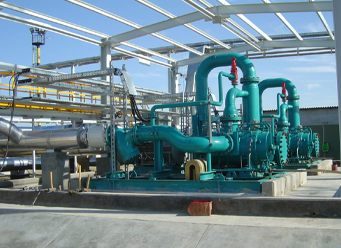English
- Afrikaans
- Albanian
- Amharic
- Arabic
- Armenian
- Azerbaijani
- Basque
- Belarusian
- Bengali
- Bosnian
- Bulgarian
- Catalan
- Cebuano
- Corsican
- Croatian
- Czech
- Danish
- Dutch
- English
- Esperanto
- Estonian
- Finnish
- French
- Frisian
- Galician
- Georgian
- German
- Greek
- Gujarati
- Haitian Creole
- hausa
- hawaiian
- Hebrew
- Hindi
- Miao
- Hungarian
- Icelandic
- igbo
- Indonesian
- irish
- Italian
- Japanese
- Javanese
- Kannada
- kazakh
- Khmer
- Rwandese
- Korean
- Kurdish
- Kyrgyz
- Lao
- Latin
- Latvian
- Lithuanian
- Luxembourgish
- Macedonian
- Malgashi
- Malay
- Malayalam
- Maltese
- Maori
- Marathi
- Mongolian
- Myanmar
- Nepali
- Norwegian
- Norwegian
- Occitan
- Pashto
- Persian
- Polish
- Portuguese
- Punjabi
- Romanian
- Russian
- Samoan
- Scottish Gaelic
- Serbian
- Sesotho
- Shona
- Sindhi
- Sinhala
- Slovak
- Slovenian
- Somali
- Spanish
- Sundanese
- Swahili
- Swedish
- Tagalog
- Tajik
- Tamil
- Tatar
- Telugu
- Thai
- Turkish
- Turkmen
- Ukrainian
- Urdu
- Uighur
- Uzbek
- Vietnamese
- Welsh
- Bantu
- Yiddish
- Yoruba
- Zulu
Telephone: +86 13120555503
Email: frank@cypump.com
Oct . 14, 2024 14:48 Back to list
Top Suppliers of Submersible Sewage Pumps for Your Wastewater Management Needs
Understanding Submersible Sewage Pumps A Guide for Suppliers
As urban infrastructure continues to expand and evolve, the demand for efficient waste management solutions becomes increasingly critical. One of the essential components in managing sewage and wastewater systems is the submersible sewage pump. This article aims to provide suppliers with a comprehensive overview of submersible sewage pumps, their functionality, applications, and key considerations for potential buyers.
What is a Submersible Sewage Pump?
A submersible sewage pump is a type of pump designed to operate while submerged in the fluid it is pumping. Generally used in sewage and wastewater applications, these pumps are critical for transporting waste from lower elevation points to higher ones, typically for discharge into treatment facilities or sewer systems. Unlike standard pumps that require priming or are housed above the fluid level, submersible pumps can continuously operate underwater, making them efficient and reliable for various settings.
How Do Submersible Sewage Pumps Work?
The core functioning mechanism of a submersible sewage pump involves an electric motor that drives an impeller. When the motor spins the impeller, it creates a centrifugal force that draws sewage into the pump. The waste is then pushed through a discharge pipe to the desired location. These pumps are designed to handle a slurry of liquids and solids, which is essential in sewage applications where the mixture can include anything from human waste to industrial byproducts.
Applications of Submersible Sewage Pumps
Submersible sewage pumps are widely utilized across various sectors, including
1. Municipal Wastewater Treatment They are commonly used in sewage treatment plants for transferring wastewater. 2. Agricultural Applications Farmers often rely on these pumps for irrigation, drainage, and sewage management in livestock operations. 3. Construction Sites Submersible pumps are essential for dewatering construction sites, especially in areas susceptible to flooding. 4. Industrial Facilities Factories that generate wastewater often employ submersible pumps to manage and transport waste for treatment. 5. Residential Use Homeowners utilize smaller submersible pumps for basements prone to flooding or to manage lift stations.
submersible sewage pump supplier

Key Considerations for Suppliers
As a supplier of submersible sewage pumps, understanding the unique requirements of your customers is paramount. Here are key factors to keep in mind when offering these pumps
1. Power Source Ensure that the pumps can operate with the local electrical supply standards. Consider offering both electric and diesel-powered options to cater to different needs. 2. Material Quality Sewage environments can be corrosive and abrasive. Highlight the construction materials of the pumps, such as cast iron or stainless steel, which offer durability and longevity.
3. Flow Rate and Head Pressure Make it clear to buyers that different applications require different pump specifications, particularly regarding flow rate and total dynamic head (TDH).
4. Ease of Maintenance Suppliers should emphasize the ease of maintenance and availability of replacement parts. A pump that is easy to service can save users time and money over its lifecycle.
5. Energy Efficiency Energy-efficient models not only help reduce operating costs but also appeal to environmentally-conscious consumers.
6. Certifications and Compliance Ensuring that pumps meet local and international standards (e.g., ISO, CE certifications) can significantly enhance credibility and appeal to safety-conscious buyers.
Conclusion
Submersible sewage pumps are vital for effective wastewater management in various applications. As a supplier, offering an array of high-quality pumps with clear specifications will not only meet the diverse needs of your clients but also establish your reputation in this competitive market. By understanding the intricacies of these pumps, their applications, and their maintenance demands, suppliers can better assist customers in making informed purchasing decisions, ultimately contributing to better waste management and environmental protection.
-
ISG Series Pipeline Pump - Chi Yuan Pumps | High Efficiency, Durable Design
NewsAug.01,2025
-
Advanced Flue Gas Desulfurization Pump with GPT-4 Turbo | Durable & Efficient
NewsJul.31,2025
-
ISG Series Vertical Pipeline Pump - Chi Yuan Pumps | Advanced Hydraulic Design&Durable Construction
NewsJul.31,2025
-
ISG Series Vertical Pipeline Pump - Chi Yuan Pumps | Energy Efficient & Low Noise
NewsJul.31,2025
-
pipeline pump - Chi Yuan Pumps Co., LTD.|High Efficiency&Low Noise
NewsJul.31,2025
-
ISG Series Vertical Pipeline Pump - Chi Yuan Pumps Co., LTD.|High Efficiency, Energy Saving, Low Noise
NewsJul.30,2025










